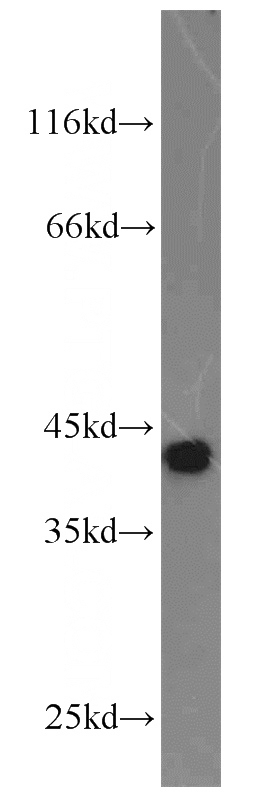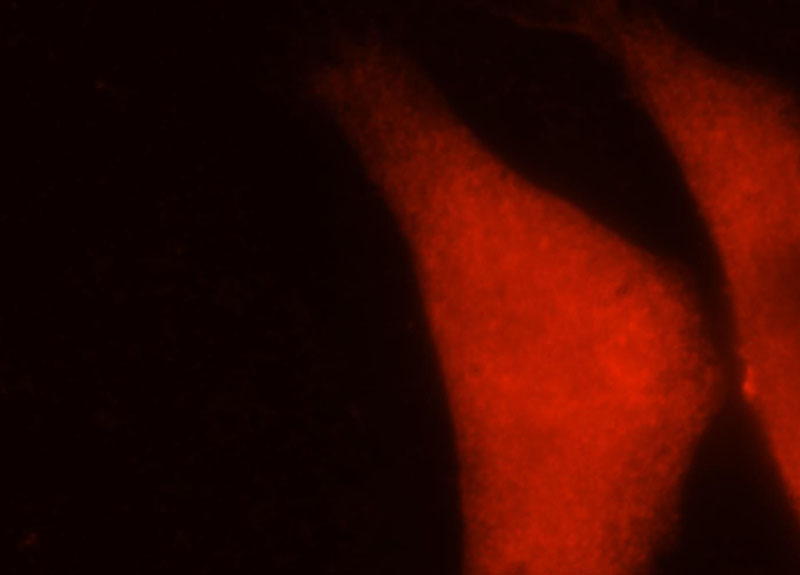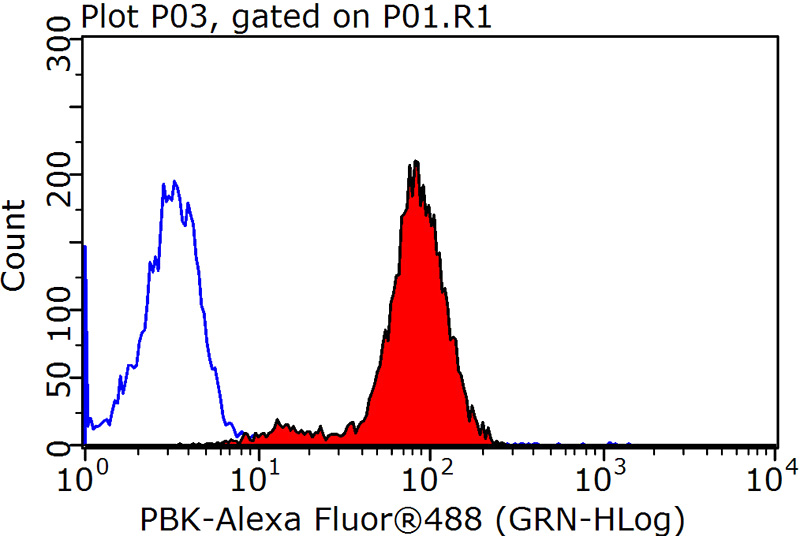-
Product Name
PBK antibody
- Documents
-
Description
PBK Rabbit Polyclonal antibody. Positive FC detected in HepG2 cells. Positive IHC detected in human placenta tissue, human skin cancer tissue. Positive IF detected in HepG2 cells. Positive WB detected in Jurkat cells, HeLa cells, mouse ovary tissue, mouse testis tissue, NIH/3T3 cells. Observed molecular weight by Western-blot: 40kd
-
Tested applications
ELISA, WB, IHC, IF, FC
-
Species reactivity
Human,Mouse,Rat; other species not tested.
-
Alternative names
Cancer/testis antigen 84 antibody; CT84 antibody; FLJ14385 antibody; MAPKK like protein kinase antibody; Nori 3 antibody; PBK antibody; PDZ binding kinase antibody; SPK antibody; TOPK antibody
-
Isotype
Rabbit IgG
-
Preparation
This antibody was obtained by immunization of PBK recombinant protein (Accession Number: XM_006716368). Purification method: Antigen affinity purified.
-
Clonality
Polyclonal
-
Formulation
PBS with 0.02% sodium azide and 50% glycerol pH 7.3.
-
Storage instructions
Store at -20℃. DO NOT ALIQUOT
-
Applications
Recommended Dilution:
WB: 1:500-1:5000
IHC: 1:20-1:200
IF: 1:10-1:100
-
Validations

Jurkat cells were subjected to SDS PAGE followed by western blot with Catalog No:113612(SPK antibody) at dilution of 1:600

Immunohistochemical of paraffin-embedded human placenta using Catalog No:113612(SPK antibody) at dilution of 1:100 (under 40x lens)

Immunohistochemical of paraffin-embedded human placenta using Catalog No:113612(SPK antibody) at dilution of 1:100 (under 10x lens)

Immunofluorescent analysis of HepG2 cells, using PBK antibody Catalog No:113612 at 1:25 dilution and Rhodamine-labeled goat anti-rabbit IgG (red).

1X10^6 HepG2 cells were stained with 0.2ug SPK antibody (Catalog No:113612, red) and control antibody (blue). Fixed with 90% MeOH blocked with 3% BSA (30 min). Alexa Fluor 488-congugated AffiniPure Goat Anti-Rabbit IgG(H+L) with dilution 1:1500.
-
Background
PBK(PDZ-binding kinase) is also named as TOPK, CT84, Nori-3, SPK and belongs to the MAP kinase kinase subfamily. PBK may have a role in the regulation of cellular proliferation and progression of the cell cycle. It has a characteristic cdc2ycyclin B phosphorylation site(SyT-P-X-KyR) at its N terminus,which is conserved across species, and it is phosphorylated in a cell cycle-dependent manner at mitosis, and that this phosphorylation is required for its activation(PMID:10779557).
Related Products / Services
Please note: All products are "FOR RESEARCH USE ONLY AND ARE NOT INTENDED FOR DIAGNOSTIC OR THERAPEUTIC USE"
